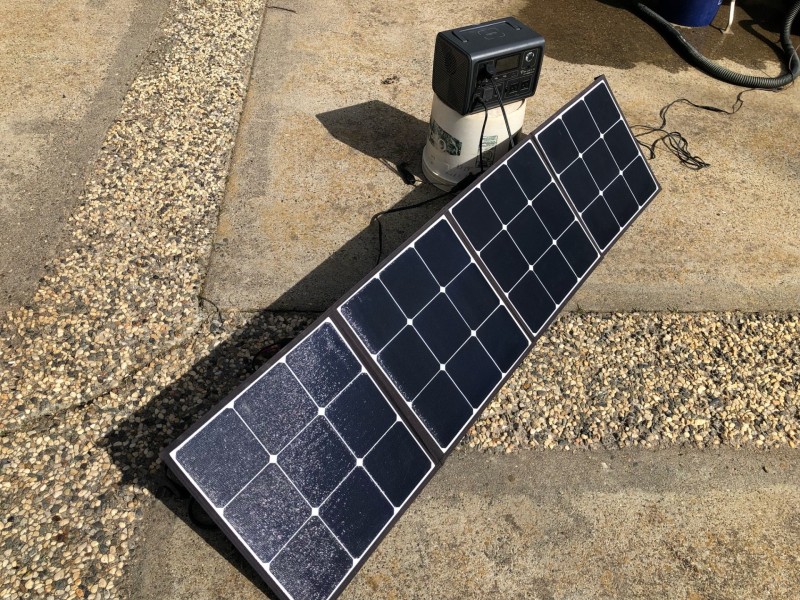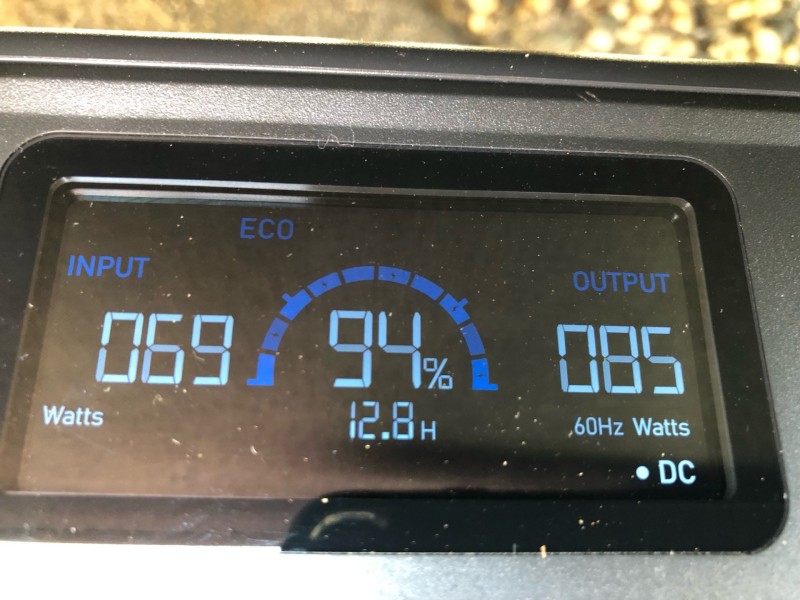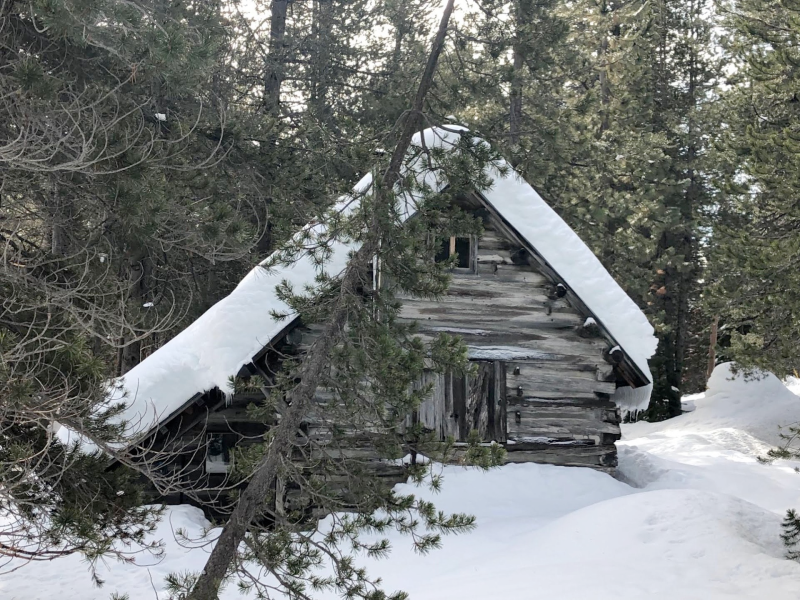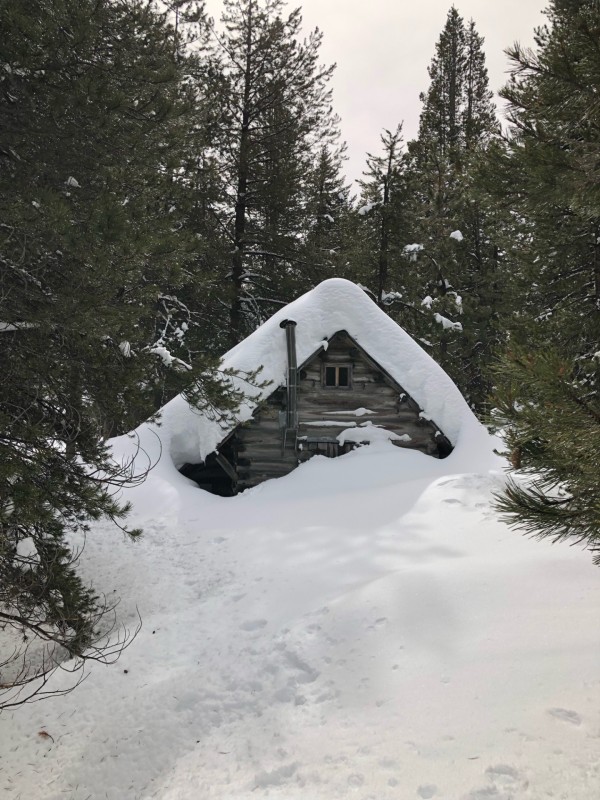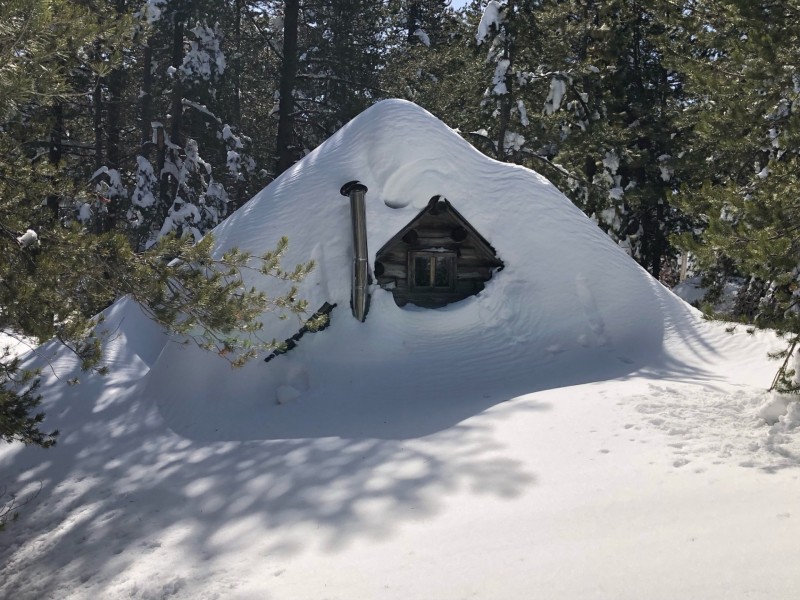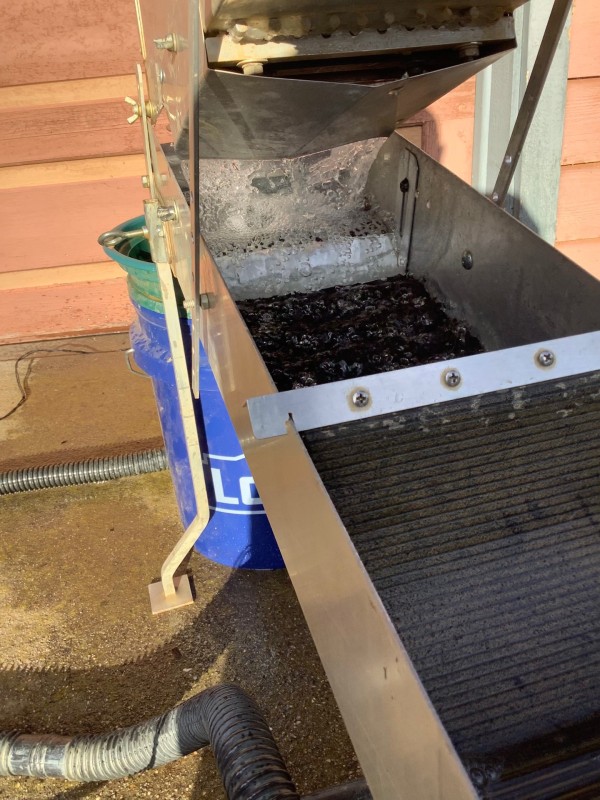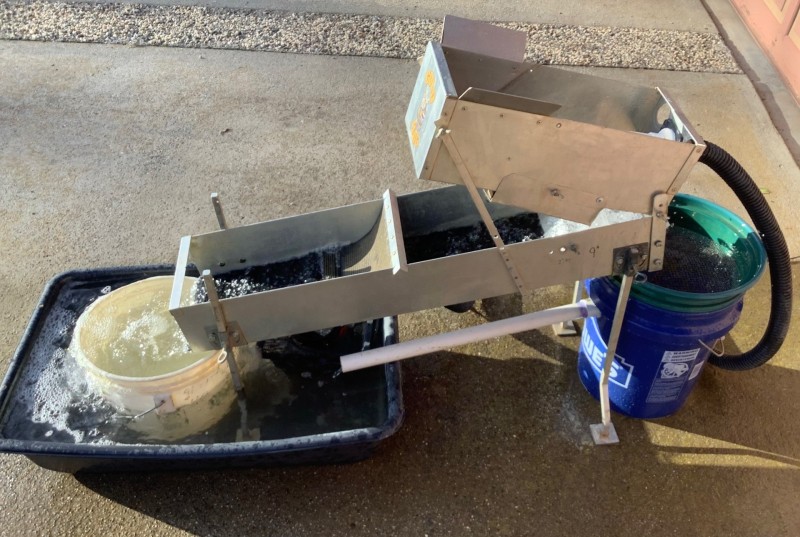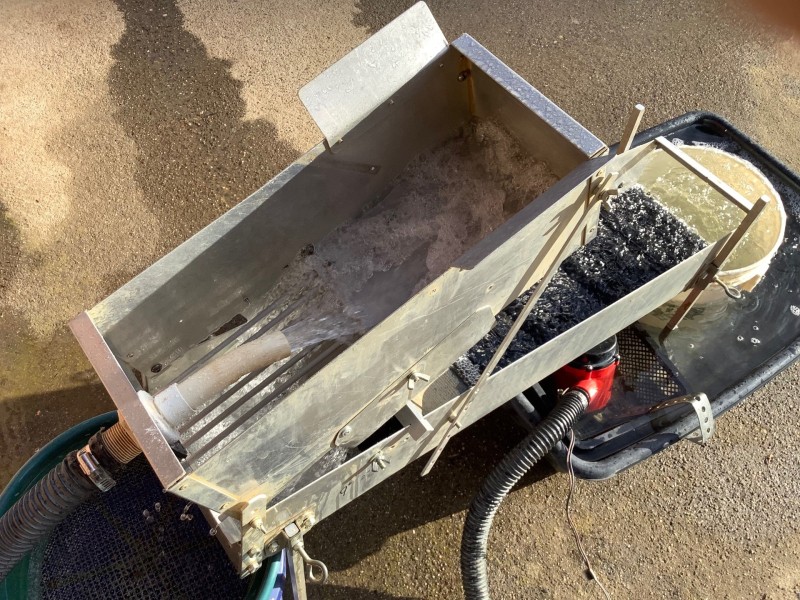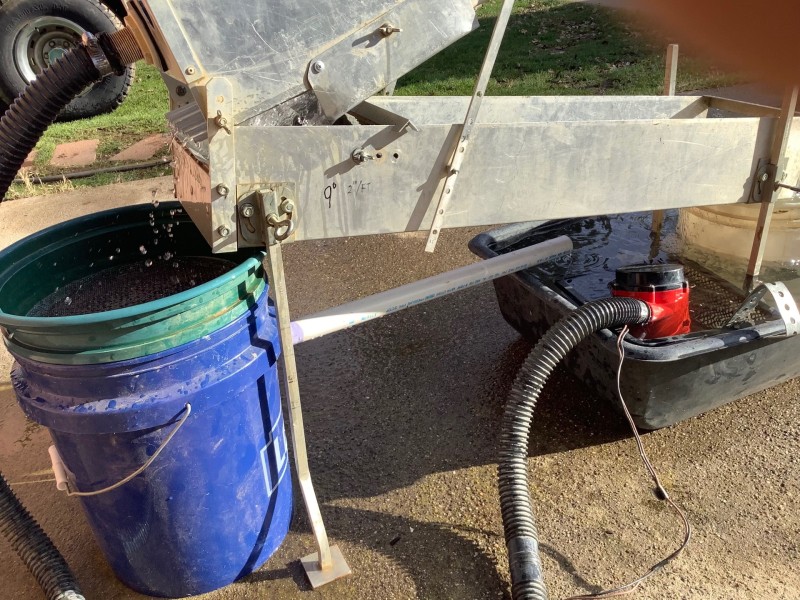
HardPack
Full Member-
Posts
601 -
Joined
-
Last visited
-
Days Won
1
Content Type
Forums
Detector Prospector Home
Detector Database
Downloads
Everything posted by HardPack
-
Diy Placer Projects
HardPack replied to HardPack's topic in Gold Panning, Sluicing, Dredging, Drywashing, Etc
What is the brand and dimensions of the travel box. Definitely appears more portable, could recharge if needed back at camp. -
Diy Placer Projects
HardPack replied to HardPack's topic in Gold Panning, Sluicing, Dredging, Drywashing, Etc
Been following the Eco-Worthy solar tracker. Also tested the Jackery 100 watt solar saga panel, it is only two folding panels which makes for an easier setup. Same DC7909 input jack plus when the sun was not behind the clouds produced 90 watts and more. After the next storms past through I’ll take the HB setup out to the claim and run some dirt. -
Diy Placer Projects
HardPack replied to HardPack's topic in Gold Panning, Sluicing, Dredging, Drywashing, Etc
Brief test run of the Bluetti EB3A and SP120. The EB3A power station has a DC/Solar input rated at 12-28vdc / 8.5 amps; The output car-plug is rated at 12vdc / 10 amps. The SP120 folding solar panel is rated at 120 watts, VOC 23.7vdc, ISC 6.66.amps. The bilge pump is rated at 90 watts, 12vdc / 7.5 amps. Normally the power station would be placed in the shade of the solar panel. Sky: cloudy. The solar panel provided 69 watts; the pump draw was 85 watts; note the 12.8 hours of remaining runtime. Apparently the smaller Bluetti EB3A is less efficient testing at 85 watts than the Jackery E1500 tested at 73 watts. In full sun the solar panel should provide in excess of 85 watts. -
Sierra Snows
HardPack replied to HardPack's topic in Gold Panning, Sluicing, Dredging, Drywashing, Etc
Been working on a rechargeable 12v heat gun coil adaptation plus deep seeking Bluetooth equipped snowshoes. My thinking is that it’ll be similar to snorkeling without the wet of liquid water. If this all works out the next cabin shack build is planned for a beach along a South Pacific Island. -
Diy Placer Projects
HardPack replied to HardPack's topic in Gold Panning, Sluicing, Dredging, Drywashing, Etc
Make note of the power station DC/solar input jack size & type. What you are looking for is the ability to use a solar panel of your choice. The EB3A has a female 8mm thin pin barrel input DC 7909 plug. The solar adapter cable has a male DC 7909 that branches to two MC4 connectors. The MC4 connectors open the door for a wider selection of solar panels. The power station DC input jack and the internal charge controller wattage/amperage rating determines the maximum solar panel size & input. The higher the capacity the power station the longer the runtime but also the longer the recharge time. Another advantage of a power station as opposed to a stand alone LFP battery is that must power stations have USB ports that can be used to charge up a metal detector, headphones, headlamps, cell phones, etc. -
Sierra Snows
HardPack replied to HardPack's topic in Gold Panning, Sluicing, Dredging, Drywashing, Etc
It appears the storage reservoirs are currently at 90% capacity. If a pineapple express hits during March there may be some flooding in the lower elevations and Central Valley . Right now the stream flows are normal for winter….frozen. -
Diy Placer Projects
HardPack replied to HardPack's topic in Gold Panning, Sluicing, Dredging, Drywashing, Etc
Picked up a Bluetti EB3A power station ($200), figured runtime at 3 hour at 73 watts for the 12v/7.5 amp pump plus the Bluetti SP120 watt solar panel should provide at least 73 watts per hour. -
Homestead Cabin on January 28, 2024 Homestead Cabin on February 23, 2024 Homestead Cabin on March 8, 2024 .
-
Anyone Heard Of Ceramic Rings?
HardPack replied to F350Platinum's topic in Detector Prospector Forum
Nope, missed that one too. In hind sight probably explains why I was staying with grandma. 🤨 -
Anyone Heard Of Ceramic Rings?
HardPack replied to F350Platinum's topic in Detector Prospector Forum
Not unless you are referring to “better late than never” or “you’ve really stepped in it now”. Truly thought I had found the perfect Valentines gift. Apparently Old Grandma mentioned the “saying” you’re alluding to while I was out cutting a fresh willow switching stick. Do recall “can you hear me now”. 🥸 -
Looks good but appears to draw a lot of hostile fire. All I can say is them elk hunters need to get themselves a good mule that doesn’t balk at a stream crossing plus a retainer clip for their Poseidon battery pack. Oddly enough I do find it comforting to know there is a water-proof, bullet-proof battery pack prepared to take on the next ice age but is it…bear proof?
-
For me whether a pan or a detector it is the research of the history and the geology. Sometimes it is being out of doors but mainly it is the exploring. Over a period of time a detector will draw a picture of those who lived a life most only read about. The only thing remaining is the gold they missed and the trash they left behind. If they of had ate bean from aluminum cans, we’d all be rich.
-
Diy Placer Projects
HardPack replied to HardPack's topic in Gold Panning, Sluicing, Dredging, Drywashing, Etc
Still exploring the LFP battery options. Already have a Bluetti SP120 watt solar panel plus two Jackery Solar Saga 100 watt solar panels. The Jackery Explorer 300 plus and Bluetti EB3A have to low a watt hour rating. The Jackery 500 has a shorter life cycle Li Ion battery, the Ecoflow River 2 Max has low DC efficiency rating plus a higher price. The Bluetti EB55 works except for the price point of $398. The only other option is to purchase a 12v 50 a/h LFP battery and a PWM solar charge controller ($50) for one of the solar panels. The Li Time LFP battery ($169) has a few good reviews. The Renogy and Battleborn 12v 50 a/h batteries are the price of the EB55 then some. Weather is moving back in, so no hurry. -
Yes. Gold will settle in low pressure areas, back eddies, etc and will move downward towards bedrock (or false bedrock) as the particles travel down slope or down stream. On the hillside look for a decrease in the degree of slope such as a narrow bench or even a path or trail and around large boulders. You could pan sample up stream until the gold drops off then dry pan sample or detect upslope on one or both sides of the drainage. Keep a look out for hillside surface quartz float with rust from iron oxidation. Once the hillside quartz float drops off move back down slope looking for a quartz vein outcropping. The major quartz veins will run with the faults often with minor quartz vein crossings. If iron is present at these crossings (pockets) the gold will drop out. Keep in mind these vein may not surface. The old timers would dig a trench to bedrock below and parallel to the suspected quartz vein. Gold can travel for miles downstream from the original source. Do some research on pocket gold mining and sampling. Good luck.
-
Should I Get Started With This Hobby?
HardPack replied to streak's topic in Metal Detector Advice & Comparisons
Yes. -
Diy Placer Projects
HardPack replied to HardPack's topic in Gold Panning, Sluicing, Dredging, Drywashing, Etc
Clay mud pounding zone with a small punch plate locked behind a 1/2 inch raised lip. Using an assortment of Gold Hog mats. Moved the rubber flap forward for the photo. -
Diy Placer Projects
HardPack replied to HardPack's topic in Gold Panning, Sluicing, Dredging, Drywashing, Etc
-
Diy Placer Projects
HardPack replied to HardPack's topic in Gold Panning, Sluicing, Dredging, Drywashing, Etc
Ran a 6 hour test run with the Johnson SPX 2200 pump (rated 12v 7.5a) using the Jackery 1500. The Jackery’s 12vdc 10a outlet plug is actually regulated at 13vdc. The pump used 437 watt over the 6 hour test or an average of 72.83 watts per hour (73w/13v=5.6a). The pump lift was 26 inches. Water loss off the Grizzly bars was approximately 8 gallons per hour, setup up a rear capture bucket to direct the water to the tub. -
Diy Placer Projects
HardPack replied to HardPack's topic in Gold Panning, Sluicing, Dredging, Drywashing, Etc
I have an older Jackery Explorer 1500 with a Lithium Ion battery, with 1488 watt hours, good for fridge backup but at 32 pounds is too heavy for light weight highbanking. Later today plan to run a longer pump test with the Jackery 1500 to verify wattage use. Looking at the Bluetti EB55 ($350/16.5lbs) with the longer lasting LFP battery, with 537 watt hours and a DC discharge efficiency of 89% (537 w/h x .89 =478w/h). A 75 watt water pump at 478w/h is approx. 6 hours of runtime without any solar panels. The EB55 can handle up to 200 watts solar panels. -
Natural History Museum Of Los Angeles County
HardPack replied to mn90403's topic in Detector Prospector Forum
The Ruby Mine in Sierra County (photo#6) was a producer of large nuggets. There are a couple of YouTube videos of the Ruby mine. In one of the older videos a geologist walks the mine’s Eocene river channels showing the location and bends where some the largest nuggets were discovered. The original mine owner donated some of the nuggets to Sierra County. Sierra County later donated the nuggets to a LA museum for safe keeping. Here’s a link to the Ruby: http://www.rubymine.com/ Youtube video link:

